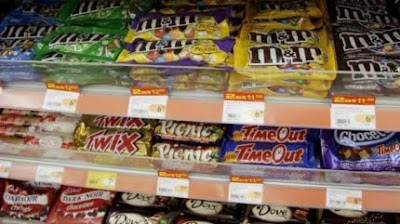We've all heard that a diet high in fat can raise cholesterol levels; now new research finds so can a diet high in sugar and processed food.
The new research, detailed in JAMA, the Journal of the American Medical Association, finds that those who eat a high amount of added sugars in prepared foods tend to have lower levels of HDL cholesterol (or "good cholesterol") and higher levels of triglycerides, another form of fat that circulates in the blood. Both lipids are important risk factors for heart disease.
The study looked at the nutritional data and blood test results of 6,000 adult men and women between 1999 and 2006. The study volunteers were divided into five groups according to the amount of added sugar and sweeteners they ate and drank each day. (The study did not look at natural sugars found in fruit and juices, only added sugars and sweeteners.)
The highest-consuming group consumed an average of 46 teaspoons of added sugars per day. The lowest-consuming group consumed an average of about three teaspoons daily.
On average, the volunteers ate 21 teaspoons a sugar a day, which adds up to 359 calories, representing about 16 per cent of their total daily calories.
The researcher found that average HDL cholesterol levels were lower among those volunteers who ate and drank higher amounts of added sugars:
In fact, among those who consumed the most sugar (10 per cent or more of their calories came from sugar), the odds that they'd have low HDL cholesterol levels were 50 to 300 per cent higher compared to those who ate the least amount of sugar.
They also found that higher consumption of added sugars was associated with higher triglyceride levels and higher ratios of triglycerides to HDL cholesterol.
The authors note that most Americans are consuming a lot more sugar than they did 30 years ago. Much of this sugar comes from sweeteners used by the food industry in processed or prepared foods to increase the "desirability" of these foods, the authors write.
They say this is the first large study of its kind to examine the link between sugar and cholesterol and triglyceride levels.
Study co-author Dr. Miriam Vos, and assistant professor of pediatrics at Emory School of Medicine says it's time that people "start looking at how much added sugar they're getting and finding ways to reduce that."
Her co-authors note it's also important to better understand the effect added sugars have on heart health "because added sugars are a potentially modifiable source of calories," they write in the study.
The authors note that there is not a clear understanding of how sugar could affect cholesterol levels. But they note that high amounts of fructose, which is processed in the liver, can cause the organ to increase production of triglycerides and LDL cholesterol.
They also note that the consumption of large amounts of added sugars is a relatively new phenomenon, having only begun with large-scale sugar production in the mid-19th century.
Dr. Yoni Freedhoff, the director and founder of Ottawa's Bariatric Medical Institute in Ottawa who was not involved in the research, speculates that humans probably weren't designed to consume large amounts of sugar.
"It's perhaps indicative of the fact that we're not built to process this amount of sugar that we see negative consequences to its consumption," he told CTV News.
He says it's not surprising that food makers add sugar to foods that most of us don't think of as sweet, such as soups, spaghetti sauce, muffins and just about every condiment, from ketchup to mayonnaise.
"It's a cheap way to make food taste better and making food taste better helps sell more food," he says.
Freedhoff notes that sugar can often appear many times on a food label, under a number of different names such as:
- Sucrose
- Fructose
- Dextrose
- Corn syrup
- Molasses
- Evaporated cane juice
- Fruit juice concentrate
- Honey
- Invert sugar
- Maltodextrin
- Polydextrose
He suggests that the easiest way to asses the product's sugar content is to read the actual sugar content on the Nutrition Facts panel.
"Four grams is a teaspoon" he notes, adding, "Obviously, less is more when it comes to sugar."

No comments:
Post a Comment